After developer Andy Sogoyan acquired a languishing former supermarket building in North Hollywood, California, along with a two-story medical-offices structure next door, he had a vision: “I imagined a modern, inviting place where elderly people, in particular, could get health care, urgent care, dental visits, senior daycare, physical therapy, eyeglasses, haircuts, manicures, dance lessons, and more—all in one spot.” That would form the core of the future Victory Wellness Center, which would also include providers and services for other age groups. To create this new multi-component facility, Sogoyan initially thought of demolishing the long-vacant supermarket, but his architect, Marcelo Spina of the Los Angeles firm Patterns, convinced him otherwise. “Marcelo showed me how great the old curving roof was,” the developer recalls. “It became clear that saving the building would be the most beautiful and environmental solution.”
In transforming the 1946 supermarket, Patterns carved into, projected from, and partially unskinned and rewrapped its boxy volume. While retaining most of the original roofline and supporting wooden bowstring trusses, the renovation had to turn the existing one-story, 17,000-square-foot structure into a 42,000-square-foot one without expanding the footprint or overall height. The $17.2 million project also aspired to convert the entire 2.4-acre site—a relatively anonymous hardscape along a traffic artery lined with strip malls and mom-and-pop businesses—into a minicampus with a more welcoming presence in this middle-to-low-income neighborhood.
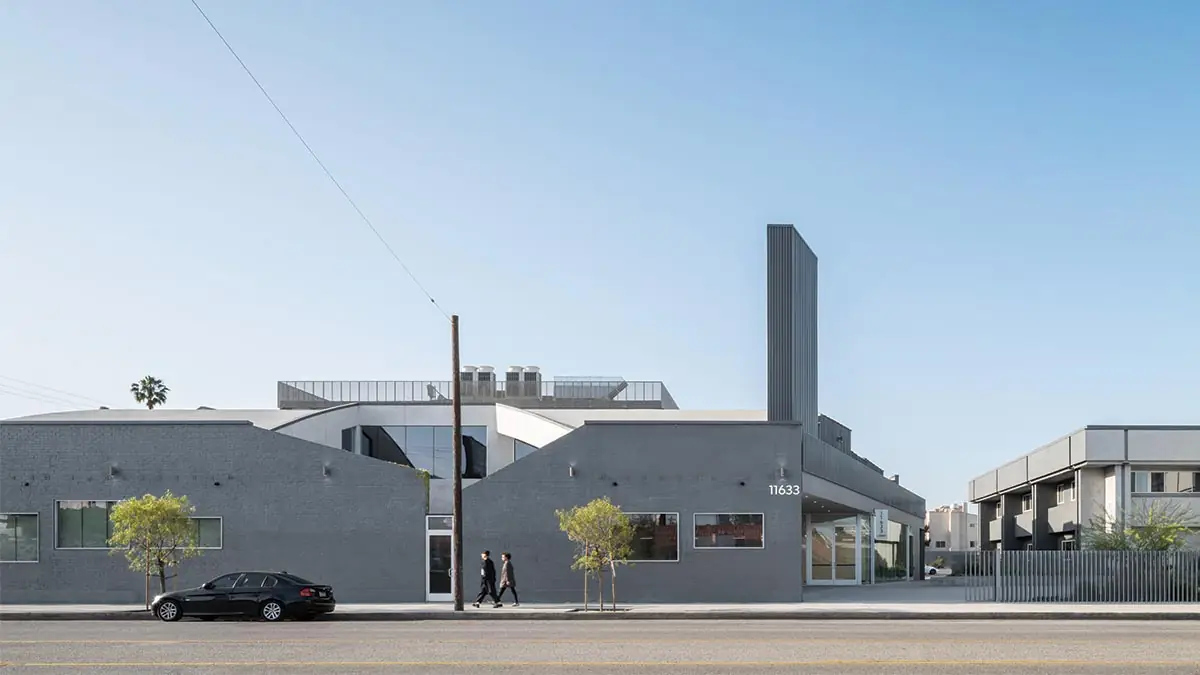
Patterns carved into, projected from, and rewrapped the existing volume. Photo © Paul Vu, click to enlarge.
Along this practically leafless stretch of Victory Boulevard, the architects responded with a scheme punctuated by green oases. Working with Tina Chee Landscape Studio, they cut into the parcel’s ground plane and the onetime supermarket, ushering in daylight and landscaped views—inextricably stitching together the building and its site. Toward that end, Patterns excavated a full basement under the existing floor plate and embedded, on three of the building’s sides, deep, cascading courtyards, two of them sunken all the way down to the sub-grade level. The architects also inserted a new floor near the top of the building, directly beneath the great trusses, essentially engulfing them. As a result, a forest of diagonal members permeates this new level, but the interior realm below it is no longer unified by overarching bowstrings against a soaring ceiling—instead, the indoor spaces are deftly linked visually by the well-like gardens, visible through extensive vertical glazing.
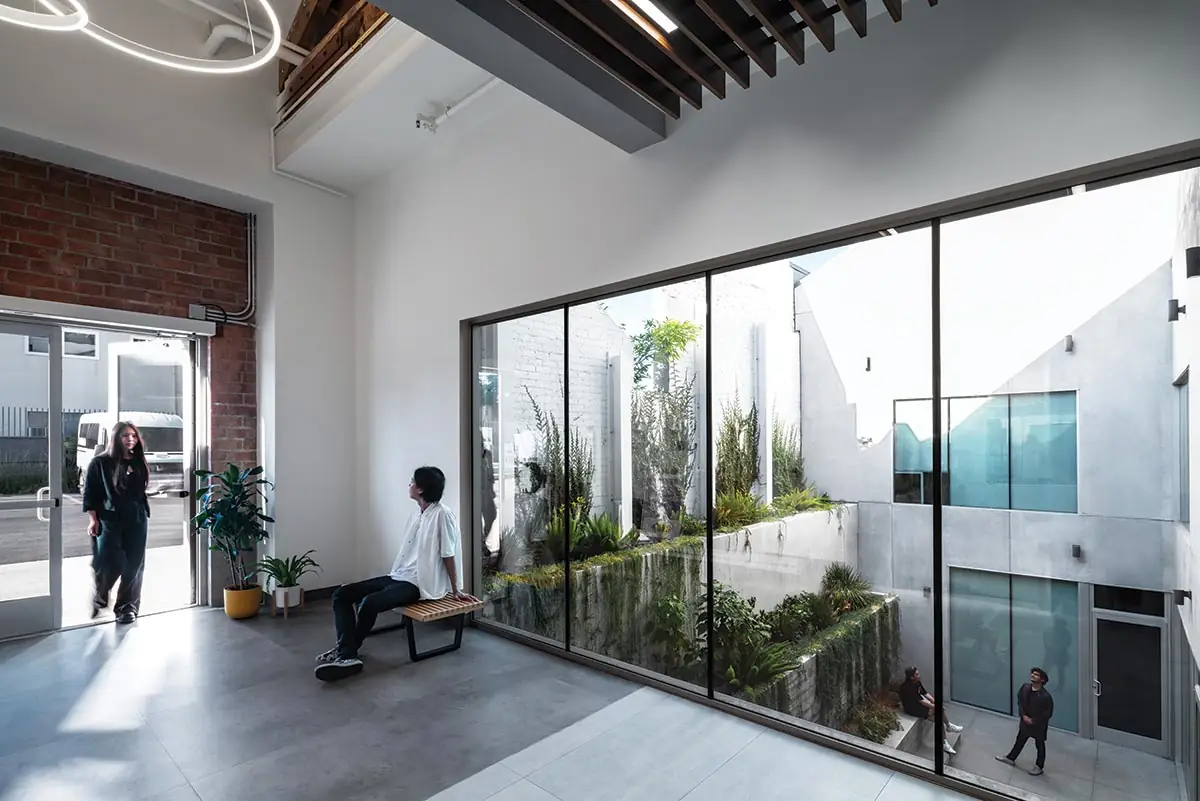
1
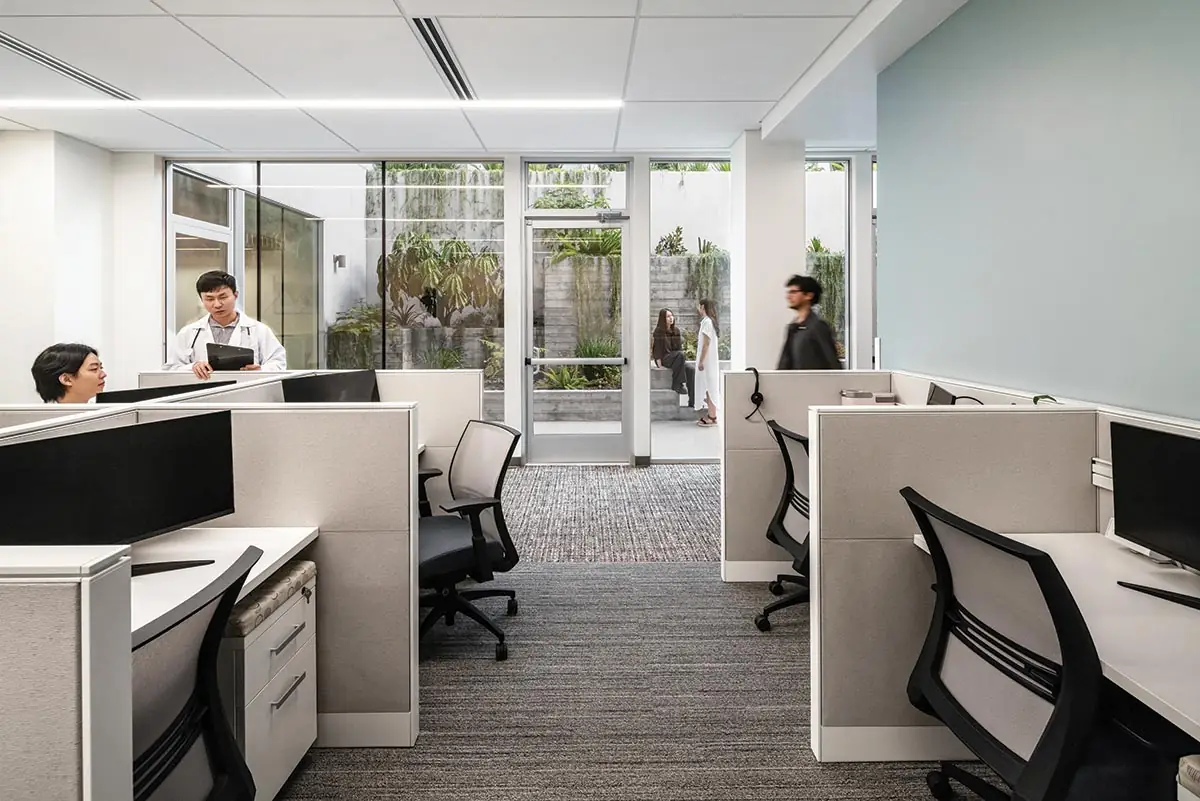
2
Ample glazing and a series of planted courtyards (1 & 2) provide daylight throughout. Photos © Paul Vu
The renovated structure—once a simple, blocky, self-contained object—now integrates complex dynamic geometries, including multifaceted pop-outs on the top level, forming work “pods,” with shared balcony space, for such occupants as yoga or massage studios. For the main floor beneath it—which primarily houses a medical-services facility, plus adult daycare—the architects punched large windows, some of them translucent, into the once-solid boulevard facade, opening it up to the south. Also punctuating the front elevation, the tall perpendicular plane that originally bore the words Valley Foods Market now forms a minimalist “minaret,” a sentinel wrapped in corrugated, powder-coated steel, with high visibility from the street. The same charcoal gray metal, along with standing-seam roofs, clads the top floor’s dormer-like pop-outs, but, below them, the architects retained the existing shell of oversize brick (now painted deep gray, instead of the supermarket’s white).
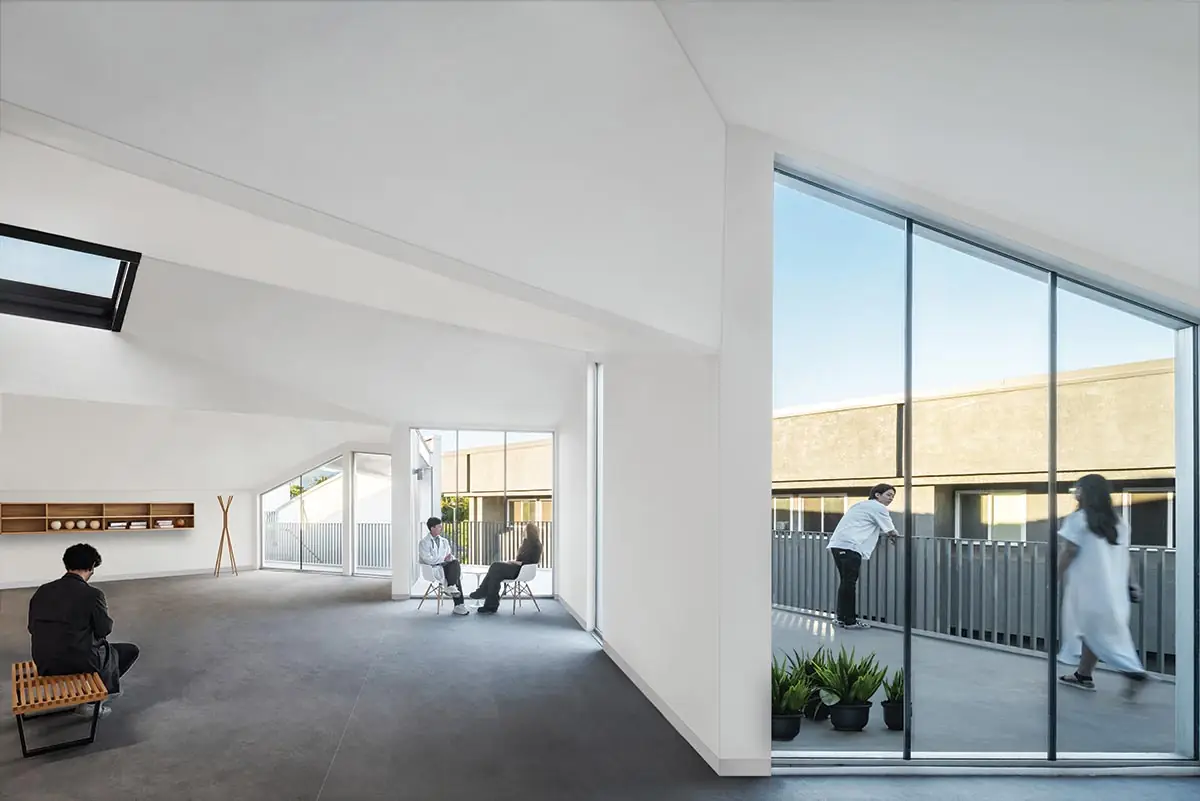
3
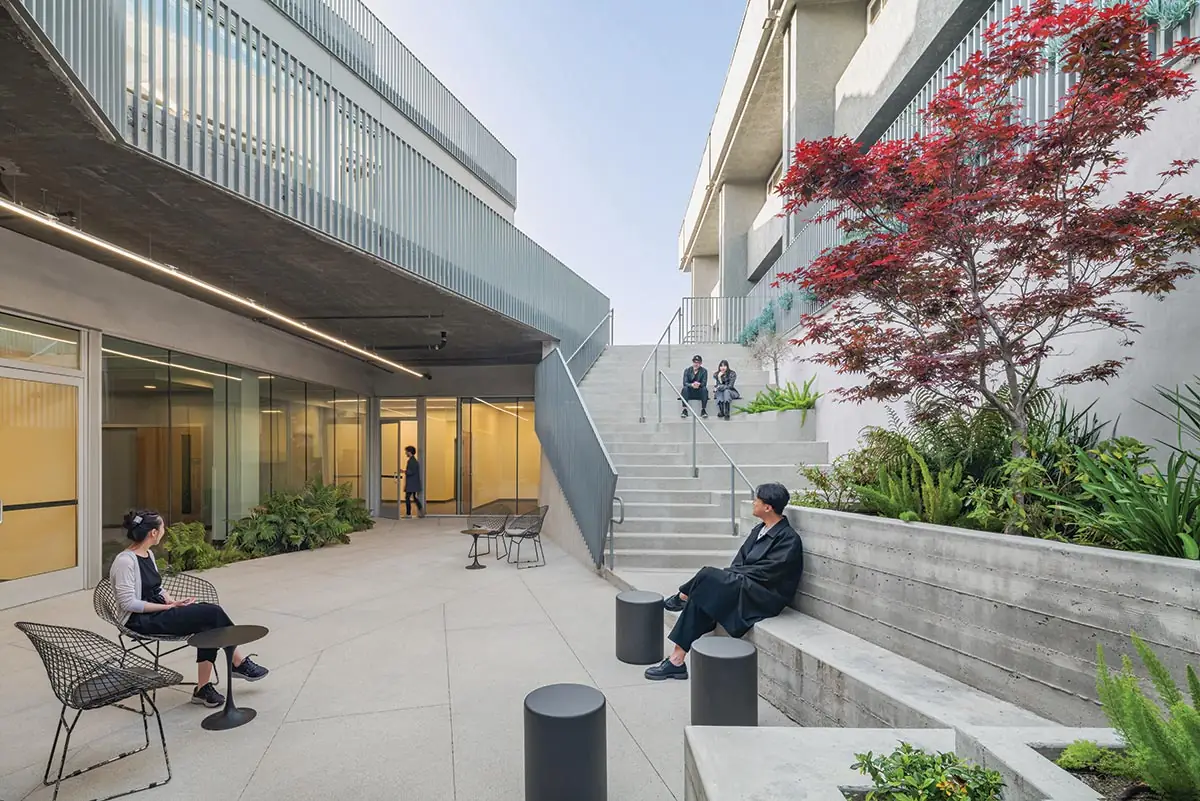
4
Work pods and a shared balcony on the new upper-level (3) overlook a subterranean garden (4) between the two wellness-center buildings. Photos © Paul Vu
To integrate the 21,000-square-foot medical-office building into the new campus, the developer updated its interiors, originally from the 1970s, and Patterns gave its stuccoed exterior a compatible shade of gray. But the architects’ more radical move was to reduce the former grocery store’s footprint by 4,250 square feet, cutting a diagonal slice from its eastern side to create a more generous, plaza-like space, with a sunken garden between the two structures. So the renovation entailed both additions and subtractions to balance the function and experience of the buildings within the surrounding site.
Though Patterns reshaped the key spatial proportions and sequences within the former supermarket (while retrofitting it seismically), the firm did not oversee the interior design, as the client wanted to give the tenants the opportunity to fit out their own spaces.
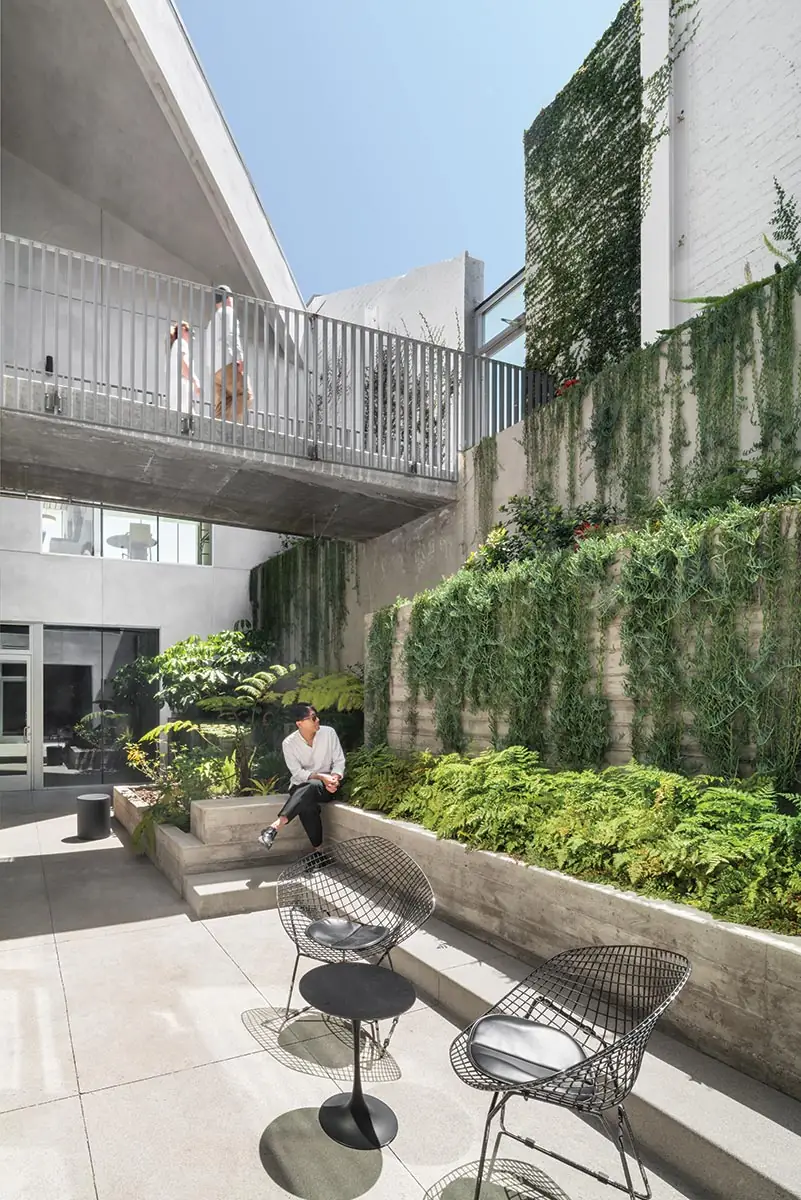
A slender entry bridge on the main structure’s south side crosses over another sunken garden. Photo © Paul Vu
Still, the single most transformative feature—for both the interior and exterior—was the introduction of those deep, shady courtyards, with some vines planted like hanging gardens and others climbing stepped walls of board-formed concrete. Now-roofless stretches of the supermarket’s original shell enclose these “outdoor rooms” along their outermost edges, but where the landscaped patios project into the building volume, the architects created pale stucco elevations (or “inner facades,” as Spina calls them). The sheltered gardens—one adjoining the center’s cafeteria for open-air dining—are accessible from multiple levels, offering a welcome refuge for clients, patients, and staff. The new campus has a total of 12,000 square feet of terraces, courtyards, and balconies.
“The amount and quality of outdoor space,” says Spina, “was essential to giving the building a public presence as a wellness and medical center—and also in making it an asset to the community.” The experiential qualities, hinted at from the street, become most striking on-site. Now—from within the subterranean gardens or looking into them from inside the building—it’s often easy to forget that this place was ever a supermarket, or that traffic is moving along the boulevard nearby.
Click plans to enlarge
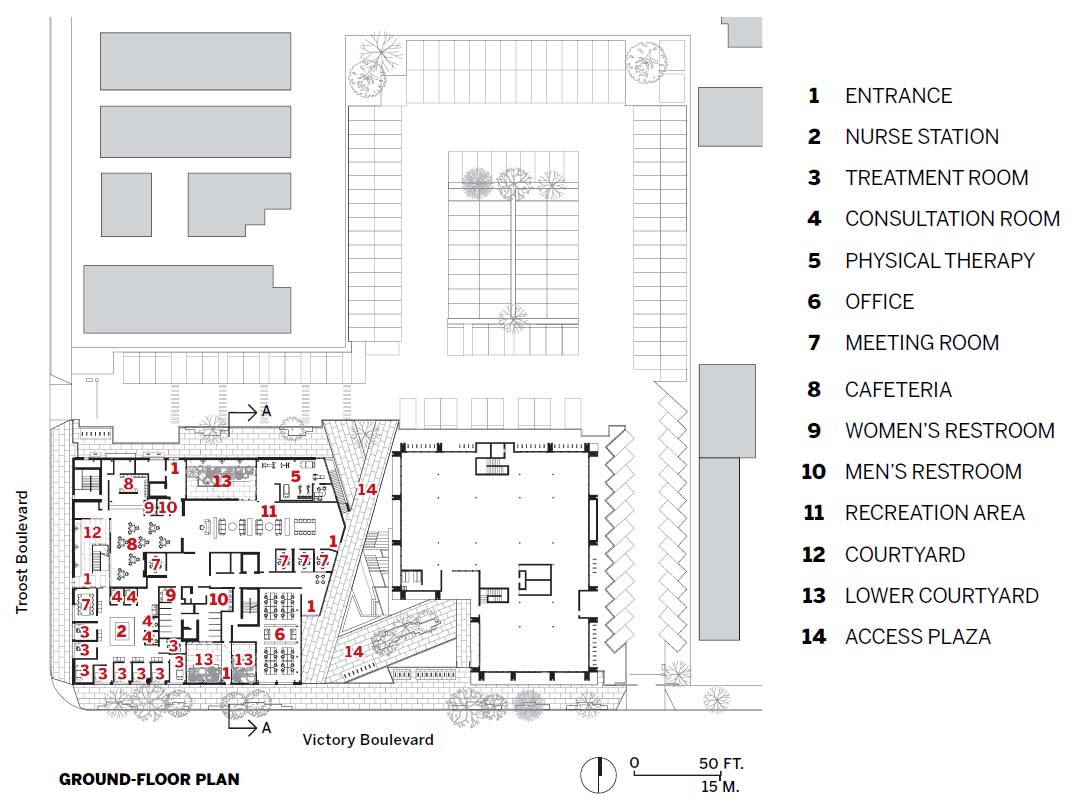
Click section to enlarge
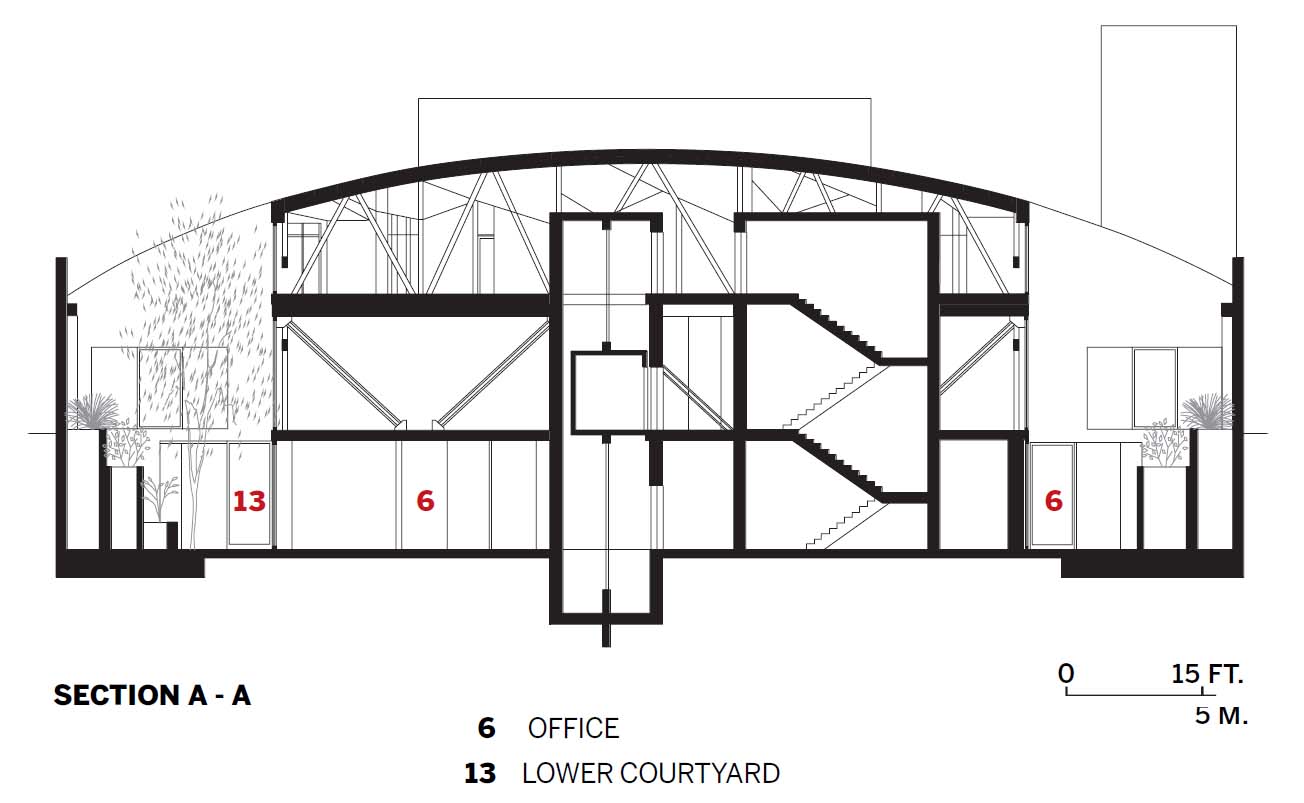
Click drawing to enlarge

Credits
Architect:
Design Architect: Patterns – Marcelo Spina and Georgina Huljich
Principal in charge: Marcelo Spina
Project Managers: Sanghyun Suh, Alejandro Loor
Project Designers: Daniela Atencio, Dylan Krueger, Carlos Navarro
Project Assistants: Justin Tan, Henry Yang, Laura Baobao, William Patrick Adams, Tom Ferrer, Dan Lu, Isabel Socorro, Rachele Sipione, Yipeng Liu
Architect of Record:
Mutuo – Jose Herrast
Engineers:
Nous Engineering (structural); Abrari Associates (electrical); CDME (m/p); Richard Prutz (civil)
Consultant:
Tina Chee Landscape Studio
General Contractor:
Ed Roane Construction
Client:
Victory Blvd, LLC
Owner:
Andy Sogoyan
Size:
42,000 square feet
Construction Cost:
$17.2 million
Completion Date:
July 2023
Sources
Concrete:
Robertson’s; Sound Crete
Windows & Doors:
Fleetwood; PRL
Roofing:
Armstrong
Paint:
Sherwin-Williams
Drywall:
USG


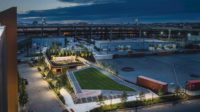
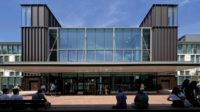
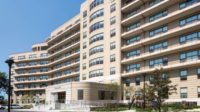
Post a comment to this article
Report Abusive Comment